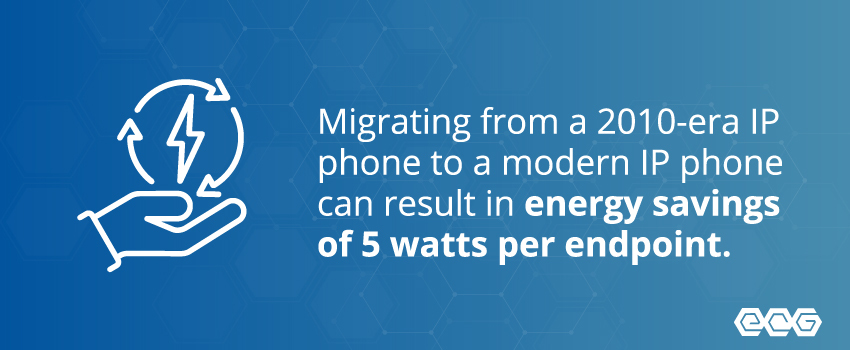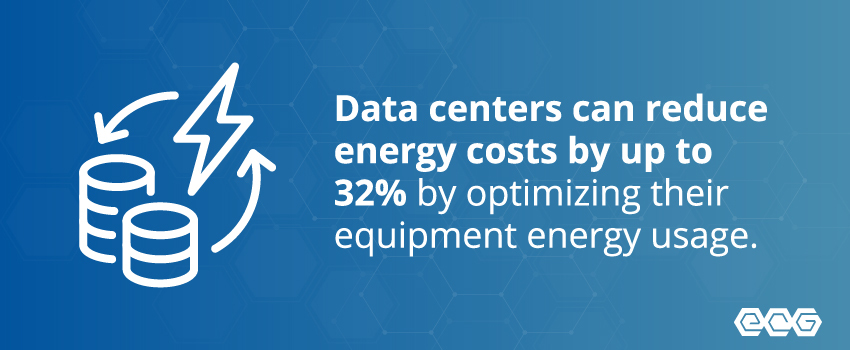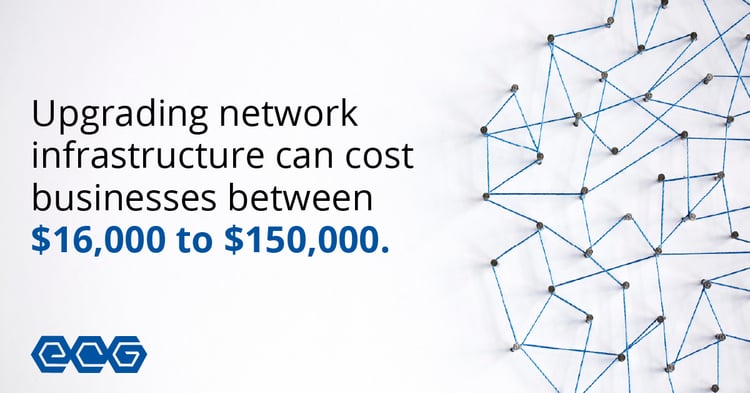Many enterprises want to reduce their carbon footprint, and the energy demands of IT are a substantial part of it. Service providers can make changes to their services and operations that substantially reduce carbon pollution and reduce energy costs.
In this blog, we'll explore the strategies voice and internet service providers can implement to start tackling carbon emissions today.
To Replace or Not To Replace?
One way to reduce the carbon footprint and environmental impact can be to replace old endpoint devices and sell the most efficient new devices. The energy consumption of modern Voice endpoints has radically changed. Newer devices have a far lower energy footprint, generating lower carbon emissions. Migrating from a 2010-era IP phone to a modern IP phone can save 5 watts per endpoint.1 If a service provider transitions 20,000 subscribers to newer devices, that could save 621 metric tons of CO2 emission every year.
But even more energy savings can come from eliminating the desk phone altogether, replacing it with a soft client or eSIM line running on the user's Smartphone. Disconnecting 100 first-generation VoIP phones or 350 modern VoIP phones can reduce your carbon footprint as much as a conventional gasoline-powered car operated throughout the year.2

But don't trash what you can keep running! While it may be smart to replace devices with more energy-efficient models in some cases, reducing electronic waste (e-waste) by extending the life of devices – rather than sending them to the landfill – is another great choice. By implementing networking strategies, such as adding a VPN to a legacy device for a layer of encryption it didn't originally have, you can extend the lifespan of much of your existing equipment.
Even Small Changes Add Up
Sometimes a small change can result in substantial savings, such as reducing the network bandwidth of background maintenance activity. Voice endpoint devices send SIP REGISTER messages regularly to the service provider. Changing the setting from 90 seconds to 300 seconds can be an easy change offering substantial savings. A simple change in signaling timing for 20,000 subscribers can reduce carbon emissions equivalent to the emissions of a gasoline automobile driven 1,283 miles per year.3
Virtualize
Embrace virtualization. Sometimes a network manager can choose between a standalone physical device and a virtual replacement. For example, the Oracle and Metaswitch SBCs can be deployed as either physical or virtualized appliances. Virtual machines have a lower energy consumption on average because of the economies of scale due to shared infrastructure.
Migrating a Session Border Controller with 500W power supplies to a virtualized system saves 8760 kWh over a year, reducing emissions equivalent to 1.4 gasoline automobiles operated for a year. Virtualization for network equipment, sometimes called Virtualized Network Functions, can also have numerous other benefits.
Don't forget to decommission inoperable and legacy devices in data centers. Typically, upgrade, migration, and network grooming projects to clean up and consolidate equipment mean your legacy equipment can be decommissioned. These projects are often delayed because the energy and carbon emissions costs are hidden from network engineers.
In many cases, 90% of the workload has been removed from a device, but it continues to run to support the last 10%. Why would you keep equipment running for 10% of its purpose? Complete the migration.

Many More Ways To Save
The ideas above are just a few examples of practical engineering changes that can lead to real energy savings and reductions in carbon emissions. In many cases, the energy savings are much greater than the listed values since a reduction in equipment energy has a reduction in cooling energy – often 32% of the total data center energy costs, according to published research.4
ECG can help you review your network, both from the perspective of physical equipment to the logical organization of network functions, to reduce your energy consumption and carbon emissions. Set up a 30-minute connect call today to learn more.
Sources:

